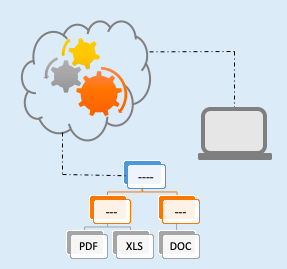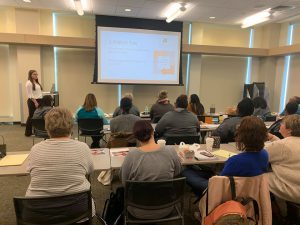Do you have a system for effectively and efficiently storing and monitoring program data? At Transform Consulting Group, we work with many clients who are required to report on program outcomes and impact, but they often lack systematic approaches to managing their data. We know data can drive program impact (check out this blog), but in order to use the data, you first have to collect and accurately report information. 
One type of organization required to report on program outcomes and impact is Head Start. Head Start programs, at all levels (federal, state, local, and internal), are required to collect program data and report on it regularly. This data includes information about staff, students, families, facilities, maintenance, etc. The list goes on! Not only is data required for reporting, but ideally organizations are tracking data to evaluate their impact and inform program decisions. Currently, there is not an all inclusive system for Head Start programs to store and monitor this data, so programs are left to find and use multiple systems.
Geminus Head Start in northwest Indiana sought our help to create a customized monthly report and interactive dashboard (see our dashboard examples here) that connects their data systems and equips their team to use the data to improve student and family outcomes. Along the course of our partnership, we came up with several tips to manage data that are helpful whether you’re a Head Start organization or other similar program wanting to effectively and efficiently manage data.
1. Develop Procedures and Data Management Plans for Data Systems
If you have a long list of data, several tools and systems are needed to track the information. To keep everything organized, we found it necessary to develop procedures around tools and systems. This creates consistent and efficient data entry.
Having procedures in place is especially helpful when hiring new staff members or shifting responsibilities between teams. One example of a tool we use to manage several data systems is a Standard Operating Procedure (SOP). A SOP is applied to a specific tool, like a child assessment. The SOP outlines its own purpose and when to use it. It also explains who is responsible, related instructions about data entry or export, and timelines.
2. Assign and Use Unique Identifiers
Similar data elements are often tracked across several systems. For example: a student’s name being used in attendance, assessment collection, and family engagement tracking. If organizations try to link data based on a name, there could be problems caused by inconsistent spelling or duplicate names (two people with the same name). A unique identifier (series of numbers and/or letters) matches program data with ease across many systems. This will help ensure efficient and accurate data reporting.
Geminus Head Start uses PROMIS as a main data entry and management system. This system automatically assigns unique identifiers to students, families, programs, etc. These identifiers are then entered into other tracking systems during data entry. Look for a similar identification feature in your organization’s main data tracking system.
3. Minimize Manual Spreadsheet Tracking
Staff often feel more comfortable developing their own spreadsheet to track organizational information related to their role. However, that’s one more source your team will need to keep track of when searching for and entering data. Manual entry also leads to inconsistencies in spelling and entry depending on the individual and time of entry. There are databases available that allow custom report building. PROMIS, the software Geminus Head Start uses, allows for custom report building. SurveyMonkey or Google Forms can also be used to build custom surveys or fillable forms. Custom reports have efficient features, such as drop down menus for consistent entry options. These reports can be built for several topic areas, but linked within one system creating a connection between common data elements (students, families, sites, etc.).

We know these three tips are not limited, but they set your organization on a path for effective and efficient data collection. Do you need help gathering and connecting multiple data sets? Do you want to create customized dashboards to visualize benchmarks and filter data? Does your staff need trained on using data to make informed decisions? If you answer yes to any of these questions, let’s chat! We’d love to provide solutions to accelerate your impact through data.

